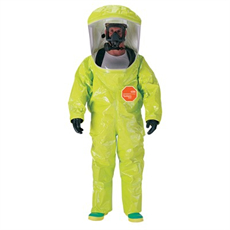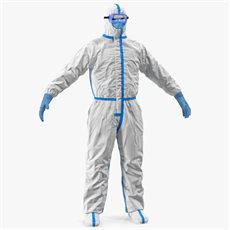Sterilization of surgical gowns is a critical aspect of infection control in healthcare settings. Proper sterilization ensures that surgical gowns are free from harmful microorganisms and safe for use in surgical procedures. Here are key considerations and methods for sterilizing surgical gowns while keeping patients safe:
- Adherence to Standards: Ensure that the sterilization process follows relevant standards and guidelines, such as those provided by the Centers for Disease Control and Prevention (CDC), the World Health Organization (WHO), and regulatory bodies in your region.
- Selection of Sterilization Method: There are several methods for sterilizing surgical gowns, including:
- Steam Sterilization (Autoclaving): This is one of the most common methods. Surgical gowns are exposed to high-pressure saturated steam at elevated temperatures. Proper cycle parameters, such as time, temperature, and pressure, must be maintained to achieve sterilization.
- Ethylene Oxide (EtO) Sterilization: Ethylene oxide gas is used to sterilize items that are sensitive to high temperatures and moisture. Gowns must be adequately aerated after EtO sterilization to remove any residual gas, which can be harmful.
- Low-Temperature Hydrogen Peroxide Gas Plasma: This method is suitable for heat-sensitive items. Gowns are exposed to hydrogen peroxide gas plasma, which effectively kills microorganisms.
- Gamma Radiation: Ionizing radiation can also be used for sterilization, but it requires specialized facilities. It is suitable for single-use disposable gowns.
- Other Methods: Depending on the healthcare facility’s resources and needs, other methods like dry heat or chemical sterilization may be considered.
- Packaging: Proper packaging is crucial to maintaining the sterility of surgical gowns. Gowns should be placed in sterile packaging materials, and care should be taken to ensure the integrity of the packaging. Labels indicating the sterilization date and expiration date should be affixed.
- Storage: Sterile gowns should be stored in a clean, dry, and controlled environment. Ensure that the storage area is free from contamination and pests. Follow the “first in, first out” principle to use the oldest gowns first.
- Quality Control: Implement a rigorous quality control process to verify the effectiveness of the sterilization process. This may include using biological indicators (spore tests) and chemical indicators to ensure that the sterilization parameters were met.
- Training and Education: Healthcare personnel involved in the sterilization process should receive proper training on the equipment and procedures. They should also be educated on the importance of sterilization and adherence to protocols.
- Documentation: Maintain thorough records of sterilization cycles, including parameters, dates, and results of quality control tests. Documentation is essential for tracking the history of each gown.
- Monitoring and Surveillance: Regularly monitor the sterilization process, and have a system in place for reporting and investigating any deviations or failures in the process.
- Auditing and Compliance: Conduct regular audits and assessments of the sterilization process to ensure ongoing compliance with standards and guidelines.
Properly sterilized surgical gowns are a fundamental component of preventing healthcare-associated infections and ensuring patient safety during surgical procedures. Healthcare facilities should establish comprehensive protocols and procedures to maintain the highest standards of sterilization and gown management.























